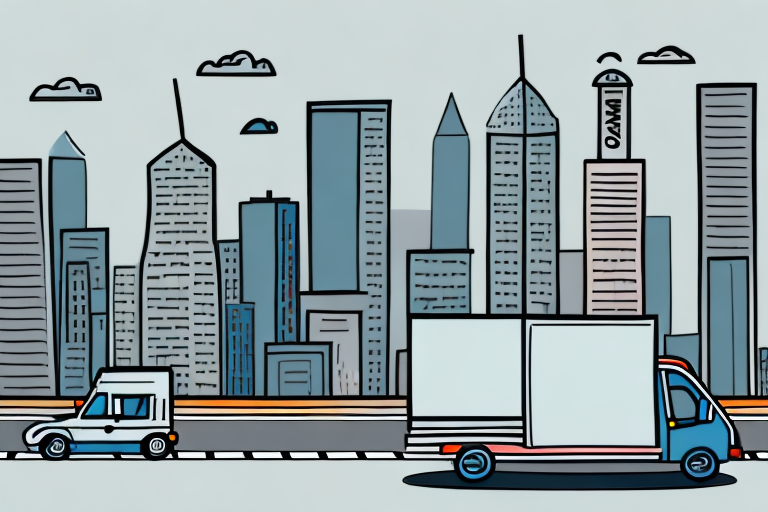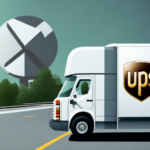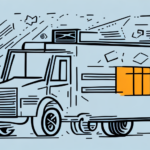Optimizing Last-Mile Delivery for Maximum Efficiency
In today's fast-paced world, last-mile delivery has become more important than ever. It refers to the delivery of packages from a transportation hub to the final destination—typically, the customer's home or business address. This final step is crucial in the logistics chain, significantly impacting customer satisfaction and business competitiveness. Businesses that optimize their last-mile delivery can gain a substantial edge in the market by enhancing the customer experience and operational efficiency.
Understanding the Importance of Last-Mile Delivery
Last-mile delivery is a critical component of the supply chain, serving as the final interaction between the customer and the retailer. The quality of this delivery experience can influence a customer's perception of the entire purchasing process. Positive delivery experiences foster customer loyalty, encourage repeat purchases, and generate positive reviews, while negative experiences can result in lost sales and damage to the brand's reputation.
Moreover, last-mile delivery encompasses more than just transportation. It includes providing accurate and timely delivery information, offering flexible delivery options, and ensuring packages arrive in good condition. Investing in these areas not only enhances the customer experience but also builds long-term loyalty.
Key Benefits of Optimizing Last-Mile Delivery:
- Improved Customer Satisfaction: Timely and reliable deliveries enhance the overall customer experience.
- Competitive Advantage: Efficient delivery processes can set a business apart in a crowded market.
- Cost Reduction: Optimized routes and processes can significantly lower operational costs.
- Sustainability: Eco-friendly delivery options appeal to environmentally conscious consumers.
The Challenges of Last-Mile Delivery
Traffic Congestion and Urban Density
Urban areas often present significant challenges such as traffic congestion and limited access to certain locations. These factors can delay deliveries and increase operational costs.
Delivery Driver Availability
Finding and retaining reliable delivery drivers is a persistent issue, especially during peak shopping seasons. Shortages can lead to delays and decreased service quality.
Accessibility Issues
Delivering to remote or restricted areas can complicate the logistics process, requiring specialized solutions to ensure successful deliveries.
Rising Delivery Expectations
The demand for same-day or next-day delivery continues to rise, putting pressure on businesses to enhance their logistics capabilities.
Technological Innovations in Last-Mile Delivery
Route Optimization Tools
Advanced route optimization software analyzes traffic patterns, delivery windows, and vehicle capacities to determine the most efficient delivery routes. This reduces fuel consumption and improves delivery times.
Artificial Intelligence and Machine Learning
AI-powered algorithms can predict potential delivery issues and optimize schedules based on real-time data, leading to more accurate and efficient deliveries.
Emerging Technologies: Drones and Autonomous Vehicles
Innovations such as drones and autonomous delivery vehicles are revolutionizing last-mile logistics by reducing delivery times and operational costs. Companies like Amazon and UPS are actively exploring these technologies to enhance their delivery services.
For more information on technological advancements in last-mile delivery, visit ShipScience Technological Innovations.
Data Analytics and Performance Measurement
Leveraging Data for Strategic Decisions
Data analytics provides insights into delivery times, route efficiencies, and customer satisfaction. By analyzing this data, businesses can make informed decisions to improve their delivery processes.
Key Performance Indicators (KPIs)
Tracking KPIs such as delivery time, cost per delivery, and customer feedback helps businesses measure the effectiveness of their last-mile delivery strategies and identify areas for improvement.
Predictive Analytics
Predictive analytics can forecast potential disruptions in the delivery process, allowing businesses to proactively address issues before they impact customers.
Sustainability in Last-Mile Delivery
Eco-Friendly Delivery Options
With growing environmental concerns, sustainable last-mile delivery practices are becoming essential. This includes using electric vehicles, optimizing delivery routes to reduce emissions, and utilizing recyclable packaging materials.
Green Logistics Strategies
Implementing green logistics strategies not only benefits the environment but also appeals to customers who prioritize sustainability. Companies can achieve this by adopting alternative delivery methods such as bike couriers or walking deliveries in dense urban areas.
Learn more about sustainable delivery practices at ShipScience Sustainability.
The Impact of COVID-19 on Last-Mile Delivery
The COVID-19 pandemic has significantly altered last-mile delivery operations. The surge in online shopping has increased demand for delivery services, leading to logistical challenges and the need for scalable solutions. Additionally, businesses have had to implement safety measures to protect delivery personnel and customers, such as contactless deliveries and enhanced sanitization protocols.
Despite these challenges, the pandemic has accelerated the adoption of digital tools and innovative delivery methods, setting new standards for efficiency and customer service in last-mile logistics.
For an in-depth analysis of the pandemic's impact on delivery services, visit ShipScience COVID Impact.
Future Trends in Last-Mile Delivery
Smart Lockers and Pickup Points
Smart lockers and centralized pickup points offer convenient and secure options for customers, reducing the need for multiple delivery attempts and enhancing overall efficiency.
Increased Automation
The future of last-mile delivery lies in greater automation, with advancements in robotics and autonomous technology streamlining the delivery process further.
Enhanced Customer Experience
Future trends focus on personalizing the delivery experience, providing customers with more control over delivery times and methods, and ensuring transparency throughout the process.
Explore future predictions and trends at ShipScience Future Trends.
Measuring Success in Last-Mile Delivery Optimization
Evaluating the effectiveness of last-mile delivery strategies is crucial for continuous improvement. Key metrics to assess include:
- Delivery Time: The average time taken to deliver packages.
- Delivery Cost per Package: The cost associated with delivering each package.
- Customer Satisfaction: Feedback and ratings from customers regarding their delivery experience.
- On-Time Delivery Rate: The percentage of deliveries made on schedule.
Regularly monitoring these metrics enables businesses to identify inefficiencies, optimize processes, and enhance the overall delivery experience.
For comprehensive tools and strategies to measure delivery performance, visit ShipScience Performance Measurement.
Collaborating with Partners to Enhance Delivery Efficiency
Partnerships with local delivery companies, third-party logistics providers, and technology firms can significantly improve last-mile delivery efficiency. Collaborative efforts allow businesses to leverage shared resources, access specialized expertise, and expand their delivery networks without substantial capital investment.
By working with partners, companies can offer more flexible and reliable delivery options, ultimately enhancing customer satisfaction and reducing operational costs.
Discover partnership opportunities at ShipScience Partners.
Conclusion
Optimizing last-mile delivery is essential for meeting customer expectations and maintaining a competitive edge in the market. By addressing challenges, leveraging technology, embracing sustainability, and continuously measuring performance, businesses can enhance their delivery operations. The integration of innovative solutions and strategic partnerships further paves the way for a more efficient and customer-centric last-mile delivery process.
For more insights and solutions on last-mile delivery optimization, visit ShipScience.




















